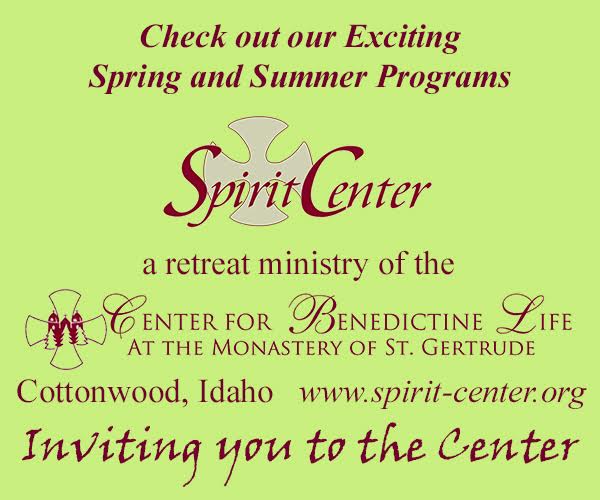…It is possible, however, that the artist is both thin-skinned and prophetic and, like the canary lowered into the mine shaft to test the air, has caught a whiff of something lethal
—Walker Percy
Something’s brewing in education, and perhaps it’s percolating to a boiling point in the Spokane Public Schools. I refer here, not to the immeasurable cups of coffee, undoubtably absorbed into the bloodstreams of superintendents, treasurers, budgeteers in District 81, but to the bubbling cauldron of calculation which would endorse science over the visual arts, and commercial viability over creativity. And yes, the net result of this either/or concoction will be the erosion of a community-value that often goes unconsidered in the boardrooms of North America, and unmonitored in the hallways of elementary schools everywhere.
After reading Jim Allen’s recent article, Art vs. Science In Our Schools, in Sunday’s Spokesman-Review, nothing less than the intrinsic value of the human species and the ecosystem and the ever-expanding cosmos came to mind. And allow me, in a few words, to understate and underdetermine what’s meant here by INTRINSIC. Persons, places, events, or things have intrinsic value whenever those phenomenal encounters—whatever they may be—are something other than one of the items in a quid pro quo transaction. That is, I pay my $2.85, after waiting in the Starbucks Drive-Through line, and expect to receive, in reciprocation, according to the market-rules, a Venti cup of dark roast. I get this for that. But as I ponder what children, ages 4 to 13, draw, sculpt, paint and otherwise create out of their own vulnerable life-experience, the worth of that product, as well as the imaginative process by which it sprang into being, can’t be measured.
Can it? Do such numbers exist? Numbers that might capture the non-instrumental experience of living a life, of facing its uncertainties and of honoring the sacred nature of relationships?
J. Evans Pritchard
J. Evans Pritchard. That’s the fictional character, not mentioned in Allen’s piece alongside Adam Swinyard, the associate superintendent who claims, “We’re shifting to a mode where the specific structures look similar.” Pritchard, by contrast (and by comparison) foreshadows the dilution of the visual arts in the way his textbook characterizes another course in the Humanities. In the film, “The Dead Poet’s Society”, a college-prep student reads the following:
‘Understanding Poetry,’ by Dr. J. Evans Pritchard, Ph.D. To fully understand poetry, we must first be fluent with its meter, rhyme and figures of speech, then ask two questions: 1) How artfully has the objective of the poem been rendered and 2) How important is that objective? Question 1 rates the poem’s perfection; question 2 rates its importance. And once these questions have been answered, determining the poem’s greatness becomes a relatively simple matter. If the poem’s score for perfection is plotted on the horizontal of a graph and its importance is plotted on the vertical, then calculating the total area of the poem yields the measure of its greatness. A sonnet by Byron might score high on the vertical but only average on the horizontal. A Shakespearean sonnet, on the other hand, would score high both horizontally and vertically, yielding a massive total area, thereby revealing the poem to be truly great. As you proceed through the poetry in this book, practice this rating method. As your ability to evaluate poems in this matter grows, so will, so will your enjoyment and understanding of poetry.
To this, of course, the legendary Mr. Keating, replies “Excrement”—and the battle for the soul of human species is joined.
And even if one does not happen to believe in ‘a soul’—even if one is socio-biologist, E.O. Wilson, who believes, as a scientist, that each individual resembles a colony of ants, with the electro-magnetic impulses, nerve-endings and synapse-connections of the brain, firing on all cylinders, all as one intricately-coordinated entity, scientifically-conceived—even then—and perhaps especially then—we can appreciate how the metaphors pile up and up. And a good mathematician, or a good accountant, might enjoy enumerating the instances in which the mind of a fourth grader, for example, might study an actual colony of ants, and (Eureka!) make that connection with her own mysterious identity. But what’s important isn’t so much the digits on the page, or the numeric symbols on the screen, but the intrinsic moment of connection itself.
Allen’s reporting dutifully garners the numbers, and distills them to the following: “Under the format for next year, students in all 34 elementary schools will spend the majority of their day in English, math, science and social studies… Schools were given the option to choose an additional 60 minutes per week of art or science. About two-thirds of the schools chose the latter.”
Choice
Choice, you see, is like the caramel syrup, or the sprinkle of nutmeg in the bitter coffee. Decision-makers at two-thirds of schools in our region are banking on the Rationality of the Enlightenment to continue to pay dividends. They are hoping the children, under our tutelage, will fall in love with the microscope to the exclusion of the paintbrush. They are hoping the future-specialists in the various disparate fields can learn to imagine the world differently (maybe, as a hobby) only after they dissect the supposed ‘real world’ of brute facts, and isolate the all the real-life variables of their hypotheses. The other one third, I surmise, don’t see the need to choose either/or. They want both the map-making acuity of scientific knowledge to be fully integrated with the experiential knowledge of sapientia. Decision-makers with these artsy agendas, however, are marginalized. They are placated, tolerated, and condescended to… as those who do the non-essential things in life. But I wonder. Don’t you wonder?
I wonder about the irony. I wonder if the syrupy ‘choices’ we make today aren’t like the pseudo-decisions between the right and left hemispheres of the brain, which have, in truth, worked in tandem all along. I wonder if, as Iain McGilchrist writes in “The Master and his Emissary,” we’re not overindulging the left to the detriment of the right… And does anyone really know the value of nutmeg?






